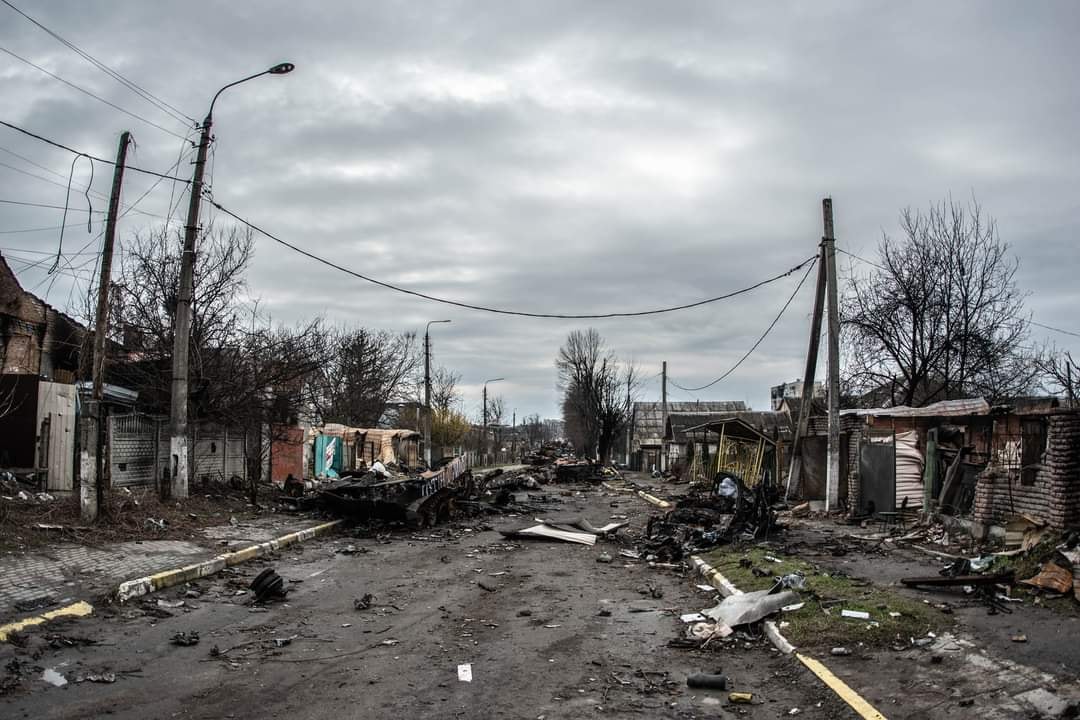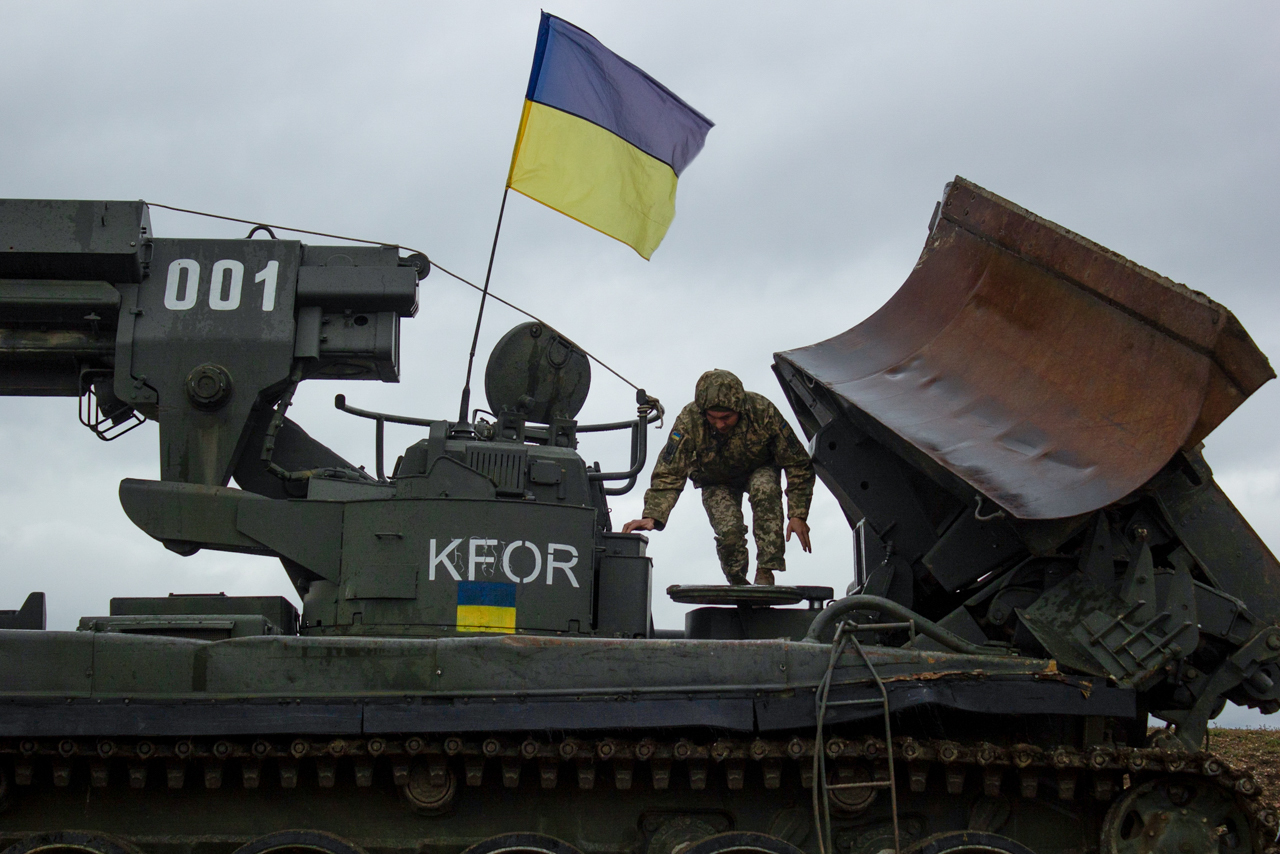
A “whole lot more ugliness” for the Ukrainian people and countryside is likely to unfold over the coming weeks as Moscow concentrates forces and long-range artillery in the Donbas and near the Sea of Azov and Black Sea, a former top commander for NATO said Monday.
Retired Air Force Gen. Philip Breedlove said, “there can be no rush to do business as usual with Russia,” in light of its continued attacks on Ukraine and new threats against its neighbors – including NATO members.
Despite suffering “a badly mauled force” after two months of fighting, the Kremlin isn’t pulling out of Ukraine, Breedlove said.
Speaking at the Atlantic Council event, Michael Kofman, CNA’s research program director of Russian studies, said, it’s “not clear Russia can succeed” militarily in Donbas. The Kremlin has been actively supporting separatists since 2014 in that area.
While the “costs are going to be high” in eastern Ukraine combat, there’s “no sign of Russia’s political leadership giving up” its political goals to bring Kyiv forcibly into its sphere of influence or any willingness to give territory it already controls, Kofman said.
One option for the Kremlin would be to mobilize reservists to get its way, he added, but the move still does not guarantee of success on the battlefield.
Kofman said, “we don’t do nuance” in the Pentagon when drawing lessons from conflicts like Ukraine. He added jokingly before the February invasion the modernized Russian army was considered “12-feet tall,” but now after months of combat it is being regarded as “4-feet tall.” Neither is correct, he said.
Before the Feb. 24 invasion, Russian President Vladimir Putin signed decrees recognizing the independence of two breakaway provinces in the region. The Kremlin seized controlled of Crimea, also part of Ukraine, in 2014 under the pretext of defending Russian-speaking residents there and to protect its Black Sea naval base at Sebastopol. Moscow used forces in Crimea to open another front at the start of the invasion.
To aid Ukraine now, Alexander Vershbow, former NATO deputy secretary general, said, “we have to keep those weapons flowing.”
During the morning forum, panelists listed air and missile defense systems, long-range artillery and a steady flow of ammunition as important in this phase of the conflict. Resilience is needed not only in Ukrainian fighting forces but in the American and NATO defense industrial bases to support Kyiv, he said, as more and more war stocks are shipped to Ukraine.
Kofman said the defense industrial base needs to address questions of being able to deliver “replaceability” both in the near- and far-term of weapons and systems because modern wars can change from quick strikes to ones of attrition.
“Autocrats should note NATO is all in” on defending Ukraine, Koffman said. But Europe “needs to pick up the slack” in meeting military commitments in the Baltic and also assist the United States in the Middle East to have Washington continue remain a power in the Indo-Pacific. Vershbow called for Canada and the Europeans to “meet half of NATO’s military commitment by the end of the decade.”
While Breedlove called for “permanently” rotating more American forces into Eastern Europe, retired Marine Corps Gen. James Cartwright, former vice chairman of the Joint Chiefs, said those forces “are still tied down” by agreements with the host nations.
Mara Karlin, assistant secretary of defense for strategy, plans and capabilities, said the about half of the $33 billion supplemental spending bill President Joe Biden requested last week will help rebuild stocks and systems in the United States that were used in Ukraine and assist Kyiv’s forces.
She added, “we know the landscape has changed” in Europe with Sweden’s and Finland’s parliaments considering NATO membership. She pointed to the alliance’s steps after 2014 to build up pre-positioned weapons stocks to meet a crisis on the continent as being useful now.
At that same time, she added the Ukrainian Defense Initiative supplied weapons and systems to Kyiv and trained its forces and overhauled its military structure to better resist Russian aggression.

For the United States and its allies, the goal of integrated deterrence and security can come through thinking globally about gray zone activities, cyber, long-range strike that ‘’give [leaders] capabilities in depth to minimize risk,” Cartwright said. It’s not “necessarily a buy my F-35s” approach in working with allies who may not be able to sustain the maintenance costs of advanced weapons systems.
Instead, Cartwright saw great value in moving away from large depots to store weapons and equipment that are vulnerable to a single strike to a localized armory approach. A move will like that “will give resilience to indigenous forces” until outside aid arrives, he said.
Later, he pointed to the commercial sector for intelligence, surveillance and reconnaissance and command and control as models the department could adapt for its use.
“The most sophistical [electronic warfare] country [Russia] was defeated by a company [SpaceX]” when Moscow tried to bring down its communications network in Ukraine.
Cartwright added, “We ought to explore more thoroughly” dual-use technologies.
“We don’t want to learn the wrong lessons” like the days of armor and surface combatants are over based on Russian losses.
“The big lessons” to take away are the value of fundamentals like logistics, manpower and training, Kofman said.
At its June meeting, Vershbow called for NATO to consider a “secure neighborhood initiative” to protect Moldova and Georgia, formerly part of the Soviet Union but not NATO members, against Russian subversion or attack.
Breedlove added without clear guidance from the alliance, “what do we do it Mr. Putin pulls out chemical, biological nuclear weapons” if not in Ukraine in the future. “We need to make those decisions immediately.”





